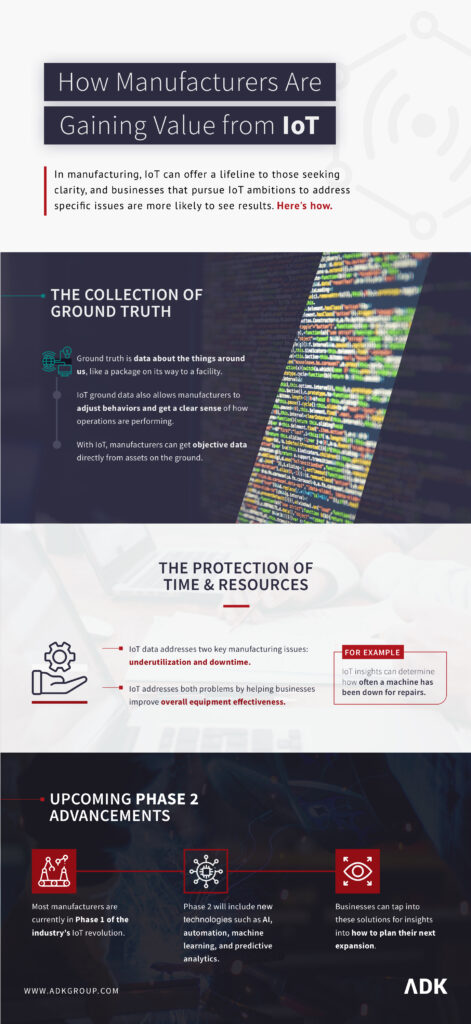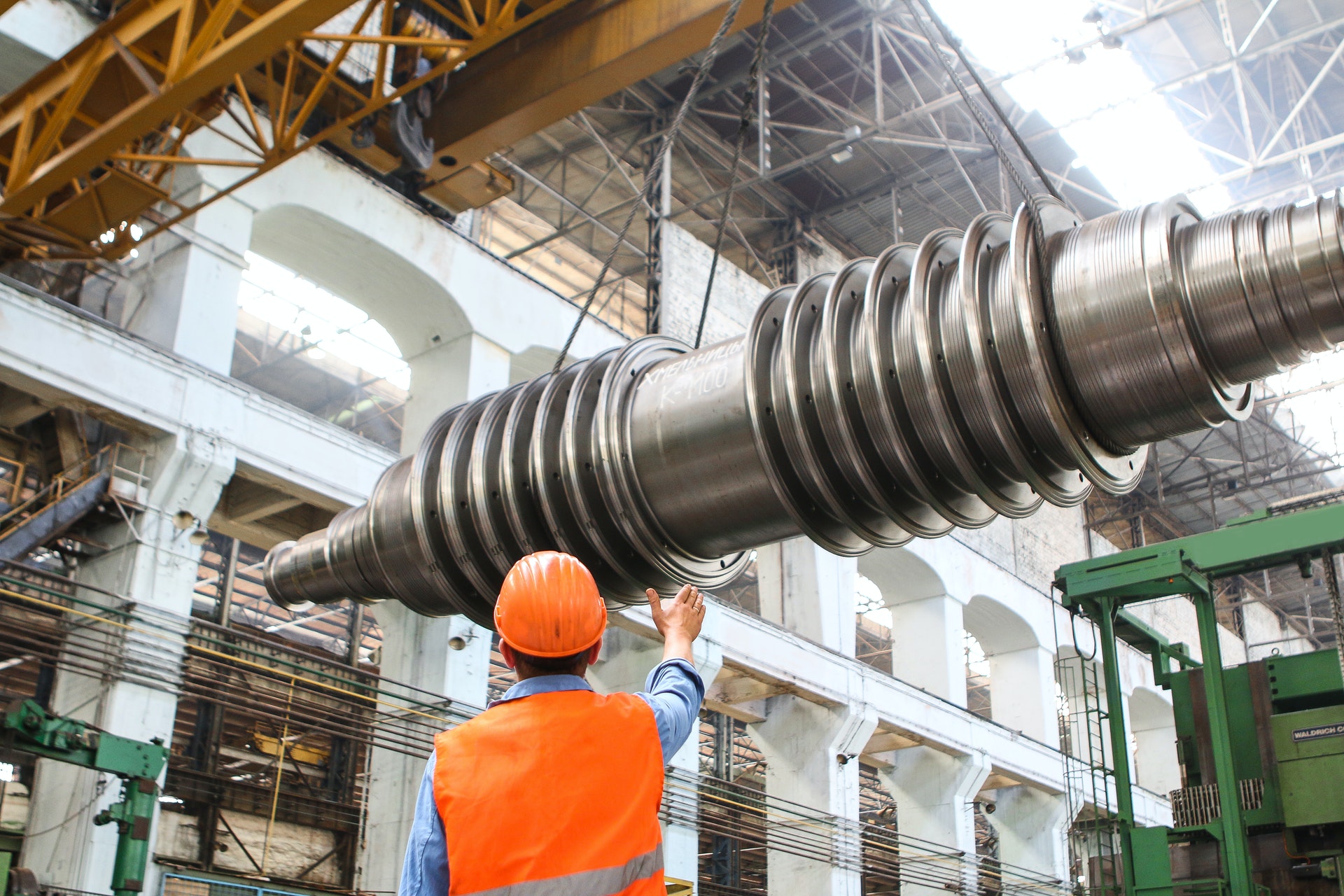In every type of business, it pays to have the right connections to succeed. In manufacturing, the right connected technology could be the key to successfully navigating one of the most disruptive periods in recent memory.
Manufacturing firms are facing unprecedented challenges on multiple fronts. In addition to finding ways to reduce costs and boost efficiencies, the global coronavirus pandemic has pushed several manufacturers — including automakers Ford, General Motors, Subaru, and Tesla — to shift their focus from building traditional products to making vital medical supplies. The pandemic is already taking an economic toll on manufacturers worldwide, according to a recent study from the Institute for Supply Management. This news comes on the heels of the U.S. manufacturing sector slipping into a recession last year, based on data from the U.S. Federal Reserve.
During these uncertain times, manufacturers need the right tools at their disposal to make informed, intelligent decisions about where to invest resources, assets, staff, and funds. Internet of Things (IoT) technology can offer a lifeline to manufacturers seeking clarity in a chaotic landscape by providing real-time data insights that enable manufacturers to monitor operations remotely, track inventory and logistics, and identify opportunities to boost efficiencies. Research from McKinsey projects that IoT applications in manufacturing (sometimes known as the Industrial Internet of Things or IIoT) is likely to generate between $1.2-3.7 trillion in annual economic value by 2025.
But investment in IoT technology does not automatically guarantee success for manufacturers. As Jonathan Clark, ADK Group’s Chief Technology Officer explains, businesses should have a clear idea of the specific problem they want to solve before implementing IoT solutions. Otherwise, these companies could miss the mark with a costly investment.
“If you know your space and know the question that’s been haunting you for 20 to 30 years in manufacturing, now you can use data to find the digital needle in the haystack,” Clark said.
Clark, who has roughly 30 years of experience working in software and IoT markets, outlined his advice for how manufacturers can embrace connected technology effectively. As he explained, businesses that pursue specific IoT ambitions to address specific issues are more likely to realize tangible results from their investments.

Collect ‘Ground Truth’
Perhaps the greatest value that manufacturers can gain from IoT technology is intelligence. Clark notes that manufacturers are currently in Phase 1 of the IoT revolution that focuses on collecting and analyzing data. Implementing IoT systems into manufacturing operations can provide business leaders with “ground truth” into their operations, thereby removing a filter of uncertainty over how systems, assets, and operations are functioning.
“Ground truth is the data about the things around us, whether it’s a machine or a vehicle or a package on its way from a facility or to a facility,” Clark said. “There’s a tremendous value in that.”
Clark compared IoT-based ground truth in manufacturing operations to rideshare services like Uber and Lyft that provide passengers with details into their ride’s arrival time via their smartphones. Before these rideshare services became available, many consumers faced uncertainty over when (and sometimes, if) a traditional taxi will show up. Having access to the ground truth of their requested ride allows rideshare consumers to adjust their behavior accordingly, such as waiting a few minutes in a café until the vehicle gets closer.
Armed with IoT-based data, manufacturers, like rideshare passengers, can also adjust their behaviors and get a clear sense into how their operations are performing. With IoT systems in place, manufacturers can get data directly from assets on the ground instead of from personnel who might have reason to distort the facts.
“I don’t have to rely on a machine operator to tell me that they produced ten bad parts. This separates fact from fiction – especially when someone is performing poorly or memories fade during high stress situations.” Clark said. “Ground truth is going to tell me exactly what’s going on.”
Protect time and resources
Having ground truth into the state of operations empowers manufacturers to exercise greater control over their assets and be better prepared for issues that could arise in the future. Clark said these insights are especially useful to manufacturers as they address two key issues that can hamper their operations: underutilization and downtime.
The costs to manufacturers from underutilization can include poor production outputs and lost revenue opportunities. Clark added that manufacturers will lose valuable time if they attempt to make up for their lost productivity.
“It’s like farming. If you plant a week later, you are – by definition – going to harvest a week later,” Clark said. “You’ll never get that week back, it’s physically impossible. The same goes for manufacturing.”
Equipment downtime can be an equally painful headache for manufacturers, he added. If a machine or production system goes down for scheduled or unexpected repairs, businesses are prevented from producing goods. Manufacturers that are unprepared to address these kinds of issues will likely fall behind on their production goals and could struggle to get back on track.
IoT technology can help manufacturers address both of these costly problems by helping businesses improve their overall equipment effectiveness (OEE). The right connected technology can help manufacturers understand how often a machine has been down for repairs, how many products fell below ideal quality, when to plan for maintenance, or whether additional shifts are needed to increase output. These insights can help manufacturers realize new opportunities to improve their OEE.
“If I have ground truth, I can see if it makes sense to invest in a third shift or keep my other shifts and buy new machines that are more efficient,” Clark said. “You start to ask questions you simply couldn’t answer before.”
Prepare for Phase 2
In Phase 1 of the manufacturing industry’s IoT revolution, businesses will gain clearer ground truth and insight into their operations. Clark said Phase 2 will include new technologies such as artificial intelligence, automation, machine learning, and predictive analytics technologies. Businesses can tap into these solutions for insights into how they should plan their next expansion moves or whether they should invest in new equipment.
However, Clark urges manufacturers to take a focused approach when it comes to investing in AI and machine learning solutions. While IoT technology can provide access to troves of data, he said it is more important for companies to understand the types of questions they will use that data to address. Businesses that can find the right blend of data science and industry expertise will be in a better position to distinguish themselves from their competitors.
“I’m certain AI and machine learning go hand in hand with [IoT] because those [technologies] can provide insights you can’t see,” Clark said. “Maybe they can provide clarity to the right or the left while you’re looking straight ahead. That can be very helpful.”
Clark added that he does not believe it is necessary for manufacturers to replace their legacy systems entirely in order to tap into IoT’s transformative potential. Manufacturers should instead find IoT vendors that offer solutions designed to bridge the gap between older and newer solutions.
“IoT shouldn’t require you to upgrade everything,” Clark said. “Any organization is going to have a heterogeneous mix of old, medium, and new. It’s unrealistic to think anybody at scale can throw out their equipment and start from scratch.”
In these uncertain times, one thing is clear: manufacturers that can make smarter, faster, data-based decisions about how they should allocate their resources will be on stronger footing than those that are flying blind. IoT technology could be the compass that empowers manufacturers to make the most insightful decisions possible and develop their own unique roadmaps to address and anticipate problems.
